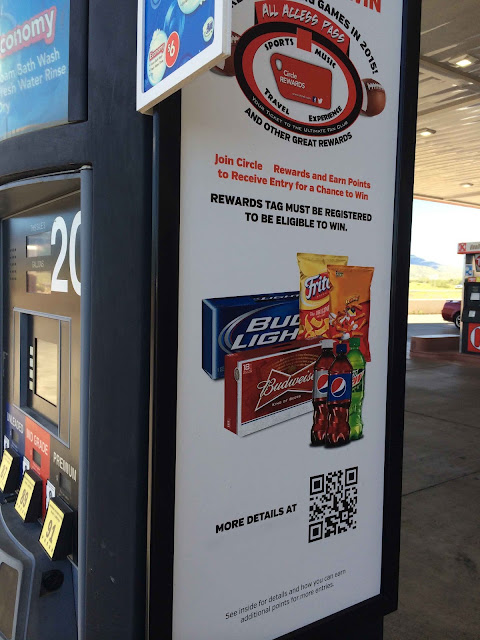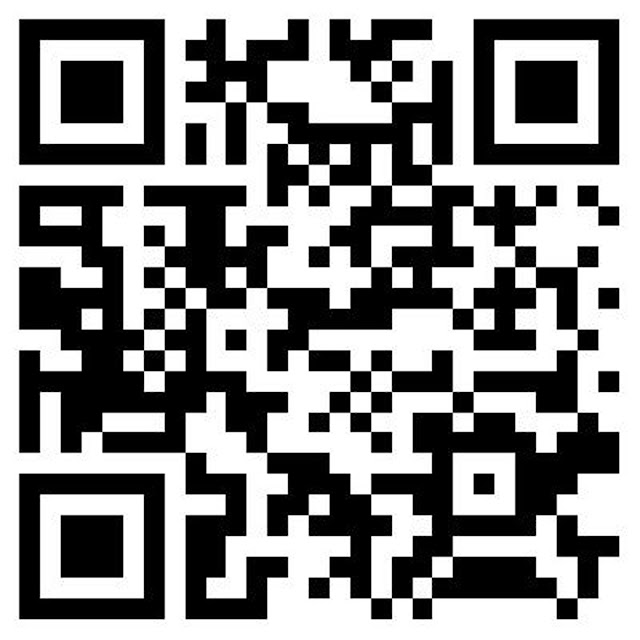If a picture is worth a thousand words, a QR or “Quick Reference” code could be worth a million. That’s because it provides the viewer with a doorway from a printed medium to unlimited interactive online content.
The Japanese company Denso Wave, which is a subsidiary of Toyota, developed QR codes in 1994, as an alternative to the traditional barcode. Because the QR could contain about 100 times the information, it was regarded as a better way to track car parts.
Following its development, the tremendous potential for all types of marketing applications was recognized. These applications include incorporating the QR codes in traditional print ads as well as direct mail advertising. Other applications include traditional signage, wide format Point-Of-Purchase posters, tradeshow and museum exhibits, and window graphics and store window displays. Using QR codes and related technologies, such as Augmented Reality, allows businesses to deliver their current on-line messaging to a mobile audience and engage shoppers in real time, which can stimulate impulse sales. I had also thought that there was great promise in the use of QR codes on packaging, linking the code to instructional manuals, technical bulletins or a YouTube “how to” videos.
One huge stumbling block to marketing success is that while most shoppers have seen QR codes in stores, most of them don’t have a clue about what they are and how to use them. Fewer than 20% of smartphone owners have downloaded the app required for scanning. A very high percentage of those tend to be rich, tech-savvy white guys, which may not correspond to your target audience.
If that wasn’t a problem, the other major issue is that most of those in the know will not take the time to take out their cell phones and scan the codes. Inappropriate use of QR codes has also turned off some of those consumers, who have scanned them. Who wants to scan a code only to be directed to a crass commercial message?
Before you peremptorily pass judgment, as others have, and proclaim that QR codes are dead, let me describe what they are and how they could be used, if anyone used them.
What Are QR Codes?
A QR Code is a type of barcode. If you have downloaded the correct app for your smartphone, you can scan QR codes. By scanning the code, your phone links to online content, such as a website, YouTube video, interactive game, augmented reality experience, pdf or discount coupon.
How Are QR Codes Used in Marketing?
I cannot deny the tremendous potential in using QR codes in print marketing. Whether you are creating a trade publication ad, direct mail package or POP display, your message is limited because two dimensional print media is static and constrained by the mechanicals, such as size, as well as by production costs. Linking to an online environment shatters any messaging boundaries, making your message dynamic and interactive.
By connecting to online content, a marketer can provide potential customers with much more product information at a significantly lower cost per impression. The key is to provide real informational value to the consumer. The QR code should link to a landing page that is relevant to the messaging in the promotion rather than to a nonspecific website homepage. The landing page must also be formatted for ease of view on a mobile device.
QR codes can also allow the consumer to communicate with the marketer through text messaging or email. Above all, QR codes can generate sales through the convenience of online shopping or by stimulating impulse buys at the checkout counter with the use of discount coupons and special offers.
Here is a list of ways that you can use QR codes:
- Link to a coupon.
- Provide details about products, services or events.
- Link to a YouTube video.
- Explain the details of an offer.
- Link to a website, Facebook page, etc.
- Provide contact details.
- Provide information about competitive products.
Wide Format QR Code Applications
By providing new avenues for communication, QR codes are ideal for POP posters, tradeshow displays and on museum exhibits because there is limited space for messages. Used in outdoor applications such as signage, these codes should be positioned so they can be easily scanned by consumers.
Fleet graphics and outdoor billboards may not be good candidates for QR codes because it may be next to impossible to scan a code when either the viewer or the viewed is travelling at high speeds. What’s more, marketers do not need to compound the problems that we already have with distracted drivers.
How Can You Create a QR Code?
Converting a URL, such as http://hingstssignpost.blogspot.com/, is easy. Better yet, at many QR code generator sites it is free and it only takes seconds. Here is what the jpeg QR code for my blog looks like:
Once you have created the QR code for yourself or one of your customers, you just insert it into your layout and print it. When incorporating a QR code into one of your layout, keep in mind the overall size must be at least 1” X 1”. Smart phones will be unable to scan anything smaller. Also provide plenty of whitespace around the code so it is noticed and that the surrounding area does not interfere with the scan. While you are not limited to black and white images, they are the easiest to scan. If you decide to use colors, make sure that there is high contrast between highlight and shadow.
Effective advertising usually includes a call to action. The same holds true for QR codes. If you want customers to scan the QR code, you need to provide them with a benefit enticing enough for them to take action. An instore POP display may incorporate the phrasing: Scan this Code for a 15% Off Coupon.
Suggestion: If you use a QR code for your website in a print ad or on the back of your business card, also print the URL underneath it. Make sure that your QR codes link to sites that are optimized for smartphones and iPads.
Test, Don’t Guess. Prior to full production, print a prototype and test the QR code to make sure that it is easy to scan on a variety of smartphones using different apps. Also, perform test scans at a number of distances and from several angles. After a promotion is launched, track the success of the program by recording how many consumers scanned the code, and responded to your call to action, whether it was a purchase at a discount, participation in a survey, YouTube viewing or a Facebook like.
Conclusion: Are QR Codes the Future?
At this time most consumers have not embraced the QR code technology. Still it may be premature to declare that QR codes are dead in the water.
Use of QR codes will not nor was it ever intended to replace traditional media. Instead QR codes have tremendous potential to complement existing marketing efforts. Their use can provide additional product information, increase website traffic, improve response rates and strengthen brand recognition and loyalty.
There are other benefits. If you are environmentally conscience, use of QR codes can help reduce the volume as well as the cost of printed material. QR codes also provide you with solid measurable results that aid in evaluating the effectiveness of a marketing promotion.
Only time will tell whether QR codes will become a window of opportunity, or turn out to be a marketing mirage, promising great return on investment but delivering little or if any in the way of solid results.




